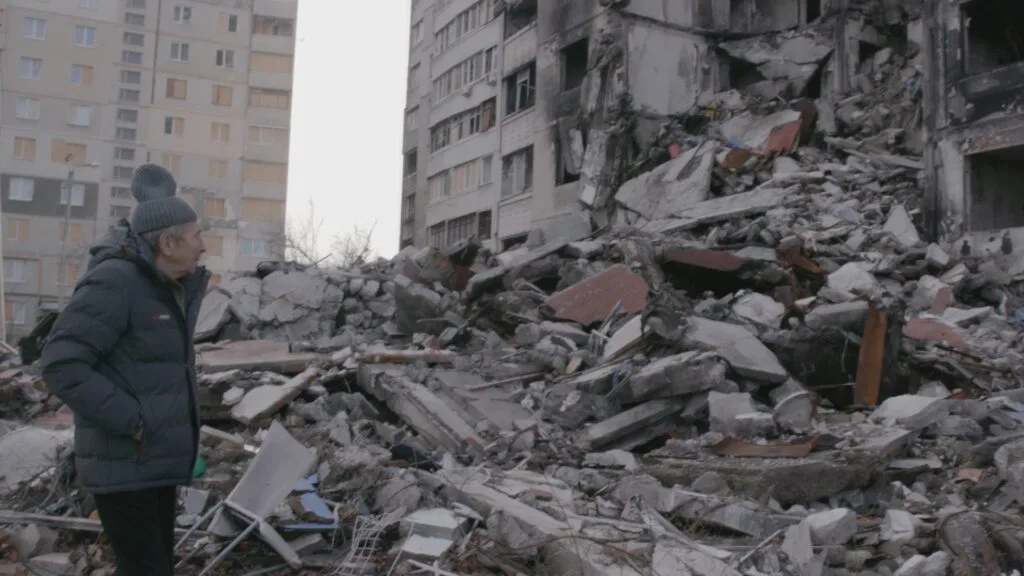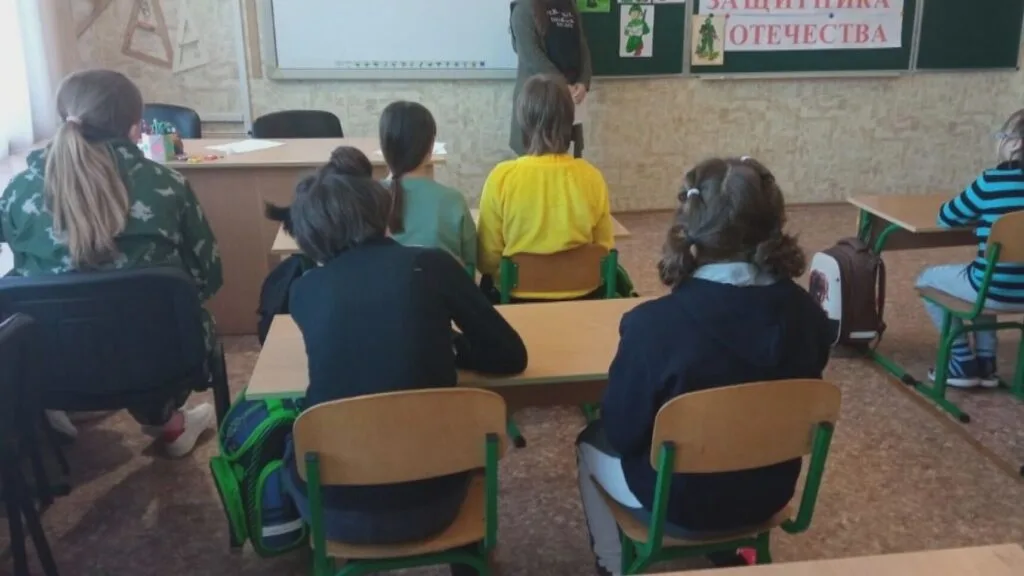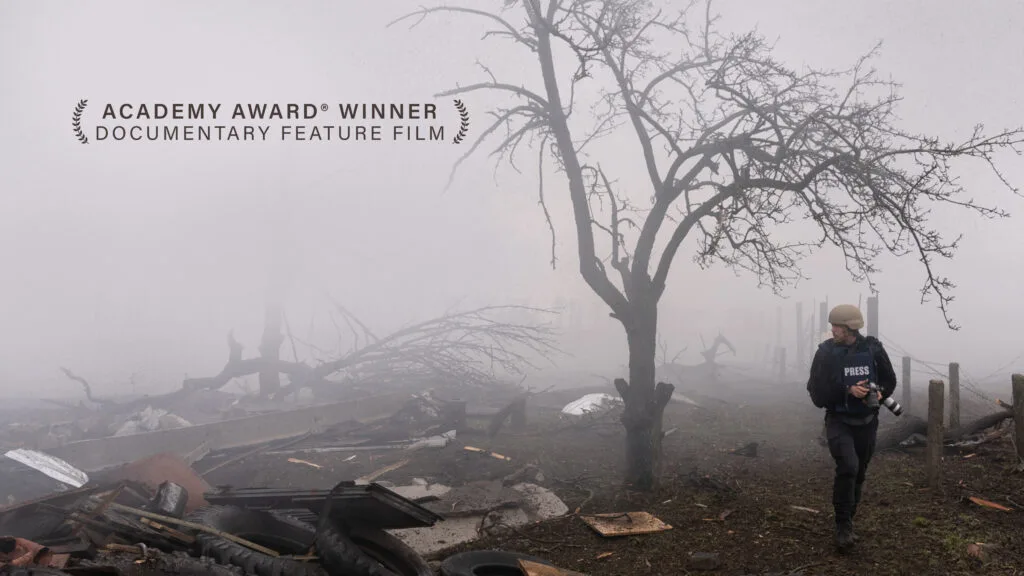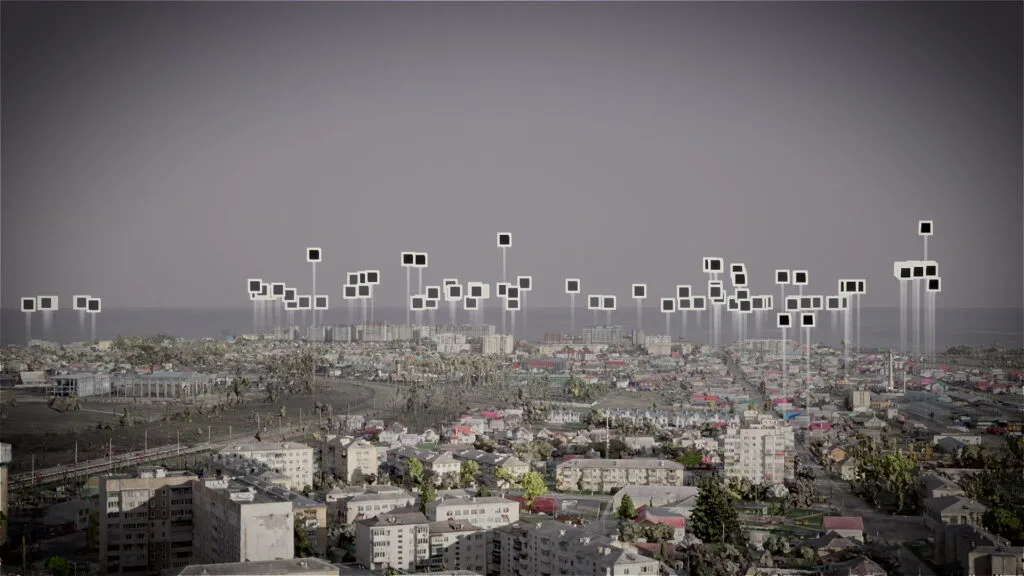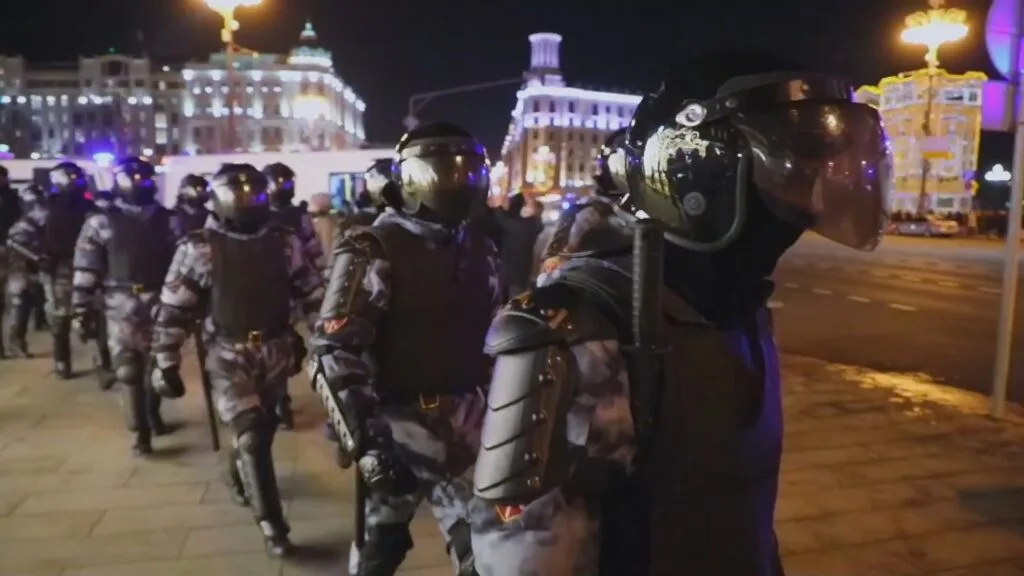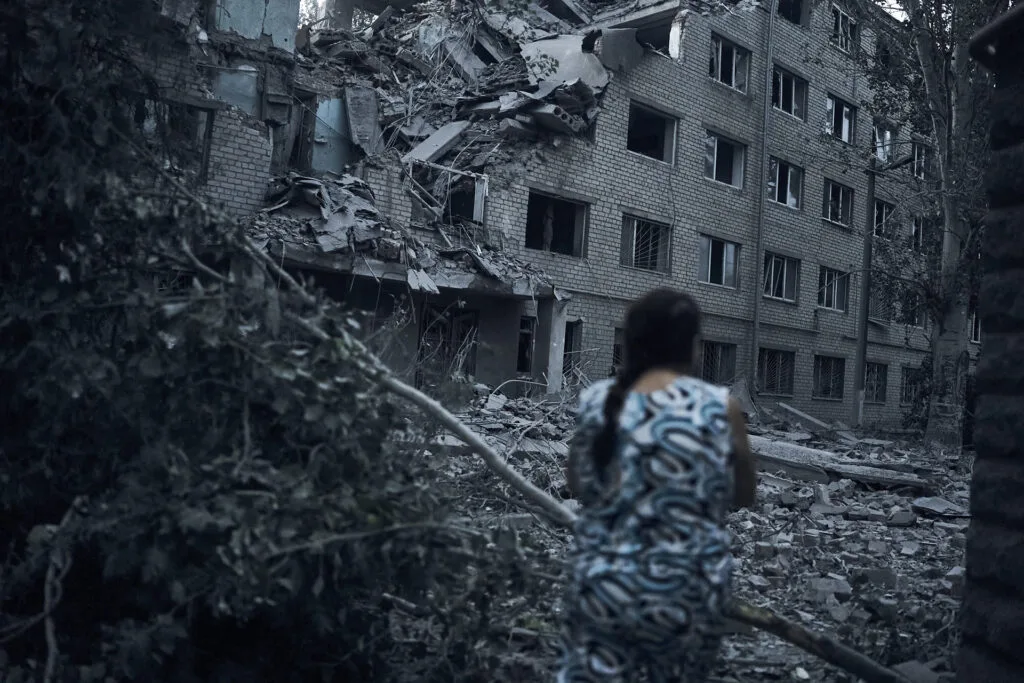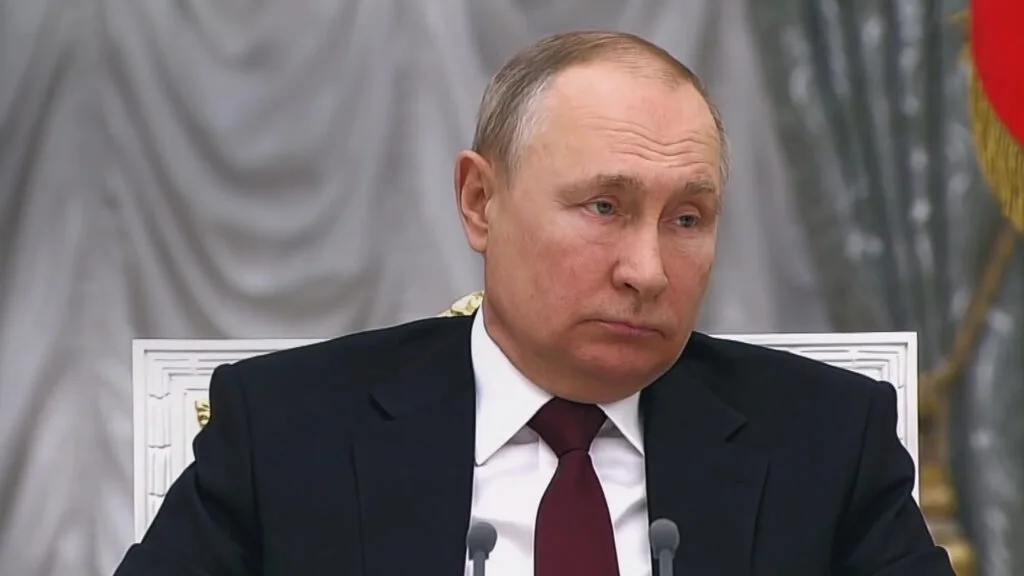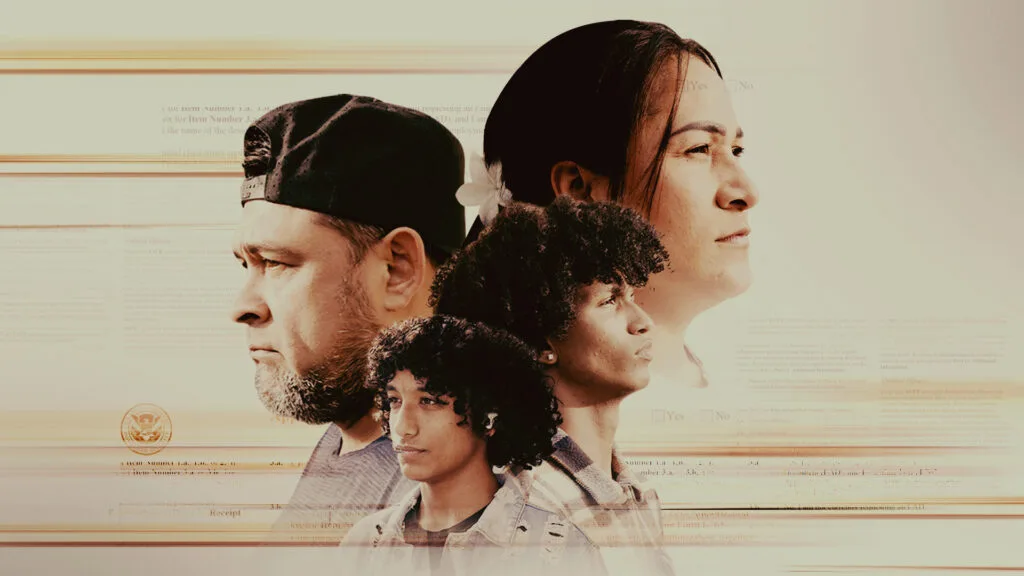‘Thank God They’re Still Alive’: An Update on a Family Featured in ‘Ukraine: Life Under Russia’s Attack’
February 14, 2023
Share
Last year, as Russia’s assault on Ukraine unfolded, hundreds of people in the city of Kharkiv moved underground to escape the bombardment.
With their families, their pets and a smattering of their belongings, these residents of Ukraine’s second-largest city and surrounding areas set up camp in the Heroes of Labor metro station.
Among those seeking shelter were 10-year-old Vika and her family, who shared their story in the August 2022 FRONTLINE documentary Ukraine: Life Under Russia’s Attack. Filmed in Kharkiv during the first three months of the invasion, the documentary chronicled the wartime experiences of civilians caught in the shelling; first responders risking their own lives; and people, like Vika, trying to survive underground.
“We understand there’s a war,” Vika said after moving into the subway-station-turned-bomb-shelter with her mom, grandmother and little brother Misha. “But we don’t understand why it has started.”
Where are Vika and her family now, nearly a year after Russian forces first attacked Kharkiv?
An updated version of Ukraine: Life Under Russia’s Attack, which aired Tues., Feb. 14 on PBS stations and is also available to stream, offers answers. Premiering almost a year after the war began and at a time of growing fears of a new assault on Kharkiv, the updated documentary revisits many of the people profiled in the original film and shares how months of war have reshaped their lives in a city that bears deep scars from Russia’s invasion.
As the above excerpt shows, Vika is no longer living underground — but is still awaiting a return to normalcy. She, her mother and Misha escaped Ukraine for Finland; her grandparents stayed behind and are living in the suburbs of Kharkiv.
The family stays connected via phone and video calls in which levity and longing intermingle, as seen in the excerpt.
When they discuss starting Finnish language classes, Misha says, “Why do I need to learn it? I’m going back to Ukraine,” as Vika playfully covers his mouth and tries to silence him. “I don’t see the point,” he adds, drawing laughter from his grandmother.
When Vika and Misha’s grandmother asks if they’re homesick, their mother replies, “Yes, very much.”
Nearly a year after their lives were upended, the family remains resolute.
“Spring is coming,” the children’s grandmother says on the video call. “So is victory and you will come home.”
After the call ends, their grandmother wipes tears from her eyes.
“I miss having the children around the house, their noise, the chaos,” she says. “Thank God they’re still alive. We’ll see them again.”
Find out what’s happened to some of the other people whose stories were featured in the original version of Ukraine: Life Under Russia’s Attack in the YouTube video below:
And watch the full, updated version of Ukraine: Life Under Russia’s Attack at pbs.org/frontline or in the PBS Video App. The documentary, a Basement Films production for GBH/FRONTLINE in association with Channel 4, was filmed, produced and directed by Mani Benchelah and Patrick Tombola; produced in Ukraine by Volodymyr Pavlov; and directed in London by Teresa Smith. The editor is Agnieszka Liggett. The production manager is Leah Gowns. The executive producers are Ben de Pear, Edward Watts and Cate Blanchett. The editor-in-chief and executive producer for FRONTLINE is Raney Aronson-Rath.
— Correction: This story was updated to correct the spellings of production manager Leah Gowns’ last name and editor Agnieszka Liggett’s first name.

Related Documentaries
Latest Documentaries
Related Stories
Related Stories
Policies
Teacher Center
Funding for FRONTLINE is provided through the support of PBS viewers and by the Corporation for Public Broadcasting. Additional funding is provided by the Abrams Foundation; Park Foundation; the John D. and Catherine T. MacArthur Foundation; and the FRONTLINE Journalism Fund with major support from Jon and Jo Ann Hagler on behalf of the Jon L. Hagler Foundation, and additional support from Koo and Patricia Yuen. FRONTLINE is a registered trademark of WGBH Educational Foundation. Web Site Copyright ©1995-2025 WGBH Educational Foundation. PBS is a 501(c)(3) not-for-profit organization.
